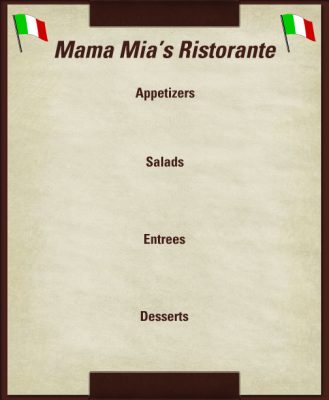Manufacturer websites need to be product intensive – that means YOU, wood products guys
I’m willing to bet that everyone who has used the internet to research products has had this frustrating experience. You go to a company’s website looking for specific product information, and you can’t find it. They talk about how wonderful they are, how many awards they’ve won, and how customer-focused they are. But nowhere on their site do they provide detailed information about the products they make. If they don’t have information about their products, who will?
Your customers need details
 Imagine you wanted to buy a lawnmower and you wanted to compare models from three different manufacturers.
Imagine you wanted to buy a lawnmower and you wanted to compare models from three different manufacturers.
- Company A’s website shows an image of a lawnmower and lists models by cutting width.
- Company B’s website has images of every lawnmower they sell, and they have specifications for their models like: horsepower, cutting width, adjustable wheels, self-propelled, etc.
- Company C’s website has multiple images for each of their models, including close-ups of key features. They have a complete list of specifications and features, including optional accessories. They have videos demonstrating the use and maintenance of their product, and they offer printable PDFs for each model with all of the specifications and images.
Which of the three manufacturers serves their customers’ needs the best? Which website is most helpful? Obviously, the answer is Company C, because they provide a wealth of product information on their site. And detailed product information is what customers use to make decisions.
Why you should love CAD files
Here’s a real-world, industry example from a couple of years ago. An architect called me looking for advice and suggestions for interior details for a project. He was up against a deadline and he had to complete his drawings the next day. I sent him to my website and suggested several products for his consideration. Once there, he could see large images and dimensions for every product I offered. Plus, he was able to download the CAD files for each product he wanted – which helped him with his drawings. He specified my product in his blueprints, and I got the job. And he was so grateful for my help, he recommended me to a friend at another firm.
Speaking of CAD files, research conducted by ThomasNet has shown that when CAD drawings are specified into a design, the actual product gets purchased 80% of the time. Stop and think about what you just read. If you had any question about the importance of offering CAD files on your website, that should convince you.
Present your product information in the most useful way
 Here’s another scenario. See the image of the menu at right. Suppose you were looking for a restaurant online and you found this menu. What do you see, or more importantly, what don’t you see? The menu shows broad meal categories, but there are no dishes listed. Very frustrating. How can you possibly judge whether this restaurant is right for you given the complete lack of information about their offerings?
Here’s another scenario. See the image of the menu at right. Suppose you were looking for a restaurant online and you found this menu. What do you see, or more importantly, what don’t you see? The menu shows broad meal categories, but there are no dishes listed. Very frustrating. How can you possibly judge whether this restaurant is right for you given the complete lack of information about their offerings?
OK, now look at your company website and pretend you’re a customer. What information about your products can you find? If you were to search by product category, would you be able to find everything (or anything) that your company offers? Or does your website look more like that restaurant menu?
What product information is available, and how it’s presented makes a difference. For instance, having a PDF of your print catalog on your website is not a substitute for actual web content. Usability experts Nielsen Norman Group warns that forcing users to browse PDF files on a website makes usability 300% worse. More to the point, a survey conducted by Elsevier found participants preferred the HTML (web) format for learning and discovery, and liked the PDF format for reading and printing. In other words, visitors use your website to browse and evaluate your products, and they download PDFs for in-depth study. Both HTML and PDF have their place and each is necessary, but they support different stages of the sales funnel. Browsing and evaluating are top of funnel; in-depth study comes further down. It’s important that manufacturer websites support all stages of the sales funnel.
What’s the take-away?
Every manufacturer needs to honestly assess how helpful their website is to their customers. Give them the information they need to properly evaluate your products, and make it easy for them to incorporate your products in their specifications. Giving your customers the information they want, when and where they want it, ensures greater customer satisfaction and loyalty, which increases the likelihood of future sales.
Learn how to improve your customer’s website experience. Read more.

